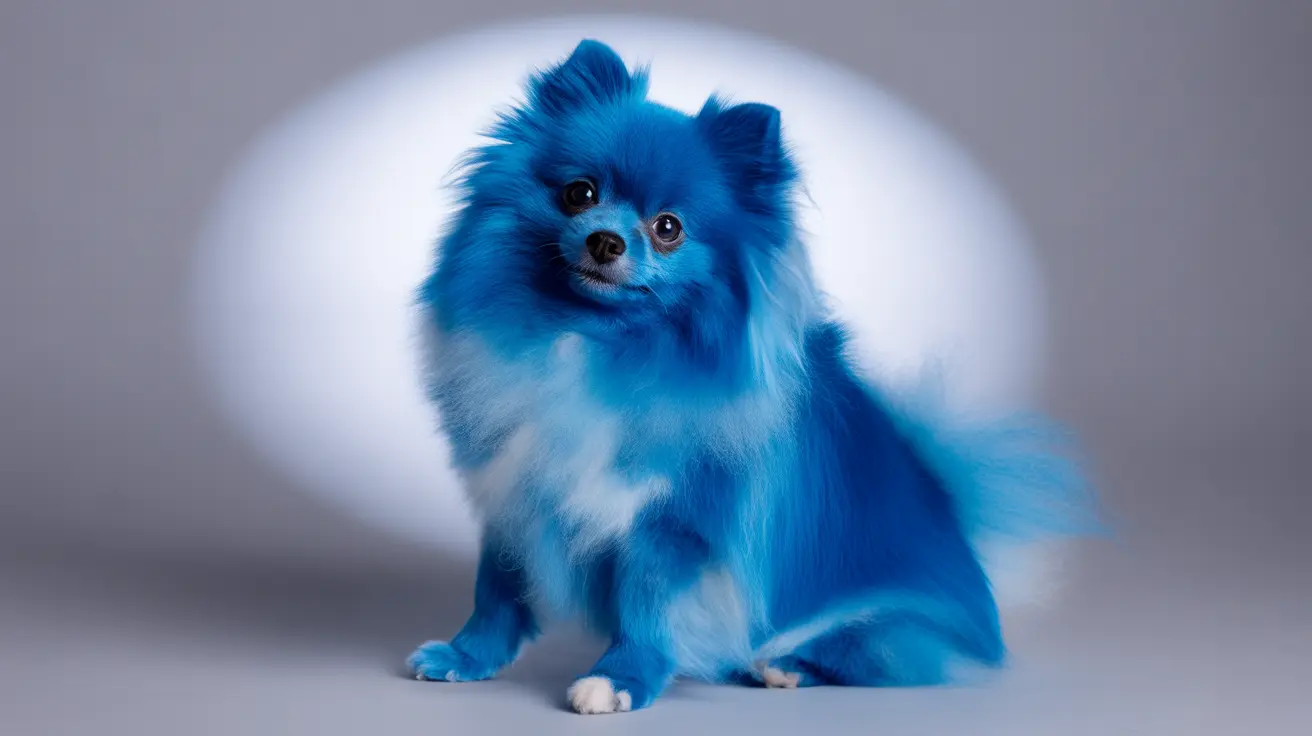Pomeranian coat colors represent one of the most diverse and fascinating aspects of this beloved breed. From classic orange and black to rare shades like lavender and blue, understanding the rich variety of Pomeranian coat colors can help potential owners and breed enthusiasts make informed decisions about their furry companions.
In this comprehensive guide, we'll explore the genetics behind these magnificent coats, discuss common and rare color variations, and provide essential information about how these colors develop and change over time.
Understanding Pomeranian Color Genetics
At the heart of Pomeranian coat colors lie two fundamental pigments: eumelanin (black) and phaeomelanin (red). These base pigments, combined with various genetic factors, create the stunning array of colors we see in modern Pomeranians.
Several genetic loci control how these pigments express themselves, including the E locus (Extension), K locus (Dominant Black), and A locus (Agouti). These genetic markers determine whether a Pomeranian will display solid colors, patterns, or unique combinations.
Common Pomeranian Colors
Orange and Red Varieties
Orange remains the most prevalent Pomeranian color, ranging from light cream to deep apricot tones. This classic color gained popularity after Queen Victoria's preference for red Pomeranians in the late 19th century.
Black and White Variations
True black Pomeranians display solid, jet-black coats with matching points (nose, lips, and paw pads). White Pomeranians, particularly the "ice white" variety, are born white and maintain their pristine color throughout their lives.
Rare and Exotic Colors
Blue and Lavender Shades
Blue Pomeranians exhibit a striking silvery-gray coat, resulting from a dilution of the black pigment. Lavender, considered the rarest color, appears as a delicate pinkish-gray and requires specific genetic combinations from both parents.
Chocolate and Beaver Varieties
Chocolate Pomeranians showcase rich brown coats with matching points, while beaver-colored Poms display a unique taupe or silver-beige shade created by dilution genes acting on brown pigmentation.
Pattern Variations and Markings
Beyond solid colors, Pomeranians can display various patterns, including sable (darker guard hairs over a lighter base), merle (mottled pattern), and parti-color (white with patches of another color). These patterns add another layer of complexity to the breed's color diversity.
Color Development and Changes
Pomeranian puppies often undergo significant color changes during their first year of life, particularly during the "puppy uglies" phase. Their final adult coat color typically stabilizes around 12 months of age, though some subtle changes may continue until age two.
Frequently Asked Questions
What are the most common and rare coat colors found in Pomeranians and how are they genetically determined?
The most common Pomeranian color is orange, determined by dominant genes. Rare colors include lavender (diluted chocolate) and blue (diluted black), which require specific recessive gene combinations from both parents.
How do dominant and recessive genes affect the variety of Pomeranian coat colors like orange, blue, and chocolate?
Dominant genes, like those producing orange coats, will always express themselves when present. Recessive genes, responsible for colors like blue and chocolate, require copies from both parents to appear in offspring.
Why do Pomeranian puppies often change color as they grow, and when does their adult coat color become stable?
Pomeranians experience color changes during their "puppy uglies" phase, typically between 4-8 months. Their adult coat color stabilizes around 12 months of age as their permanent coat develops.
Which Pomeranian coat colors and patterns require both parents to carry specific genes to appear in puppies?
Rare colors like lavender, blue, and beaver require both parents to carry dilution genes. Parti-color patterns and merle markings also need specific genetic contributions from both parents.
Are there special grooming or health considerations for Pomeranians with diluted or rare coat colors such as blue, lavender, or merle?
Diluted colors may require extra protection from sun exposure and special attention to prevent color fading. Merle patterns can be associated with health issues if bred incorrectly, particularly in double merle combinations.
Conclusion
The fascinating world of Pomeranian coat colors continues to captivate dog lovers worldwide. Whether you're drawn to the classic orange shade or intrigued by rare varieties like lavender or blue, understanding these color variations helps appreciate the breed's unique genetic heritage and guides responsible breeding practices.






